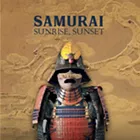Tale as old as time
[
{
"name": "Broadstreet - Instory",
"component": "25846487",
"insertPoint": "4",
"requiredCountToDisplay": "4"
},{
"name": "Broadstreet - Empower Local",
"component": "27852456",
"insertPoint": "8",
"requiredCountToDisplay": "8"
},{
"name": "Broadstreet - Instory",
"component": "25846487",
"insertPoint": "12",
"requiredCountToDisplay": "12"
},{
"name": "Broadstreet - Instory - 728x90 / 970x250",
"component": "27852677",
"insertPoint": "18",
"requiredCountToDisplay": "18"
},{
"name": "Broadstreet - Instory",
"component": "25846487",
"insertPoint": "5th",
"startingPoint": "23",
"requiredCountToDisplay": "24",
"maxInsertions": 100
}
]
by Sheri Boggs
"As the years passed he fell into deep despair and lost all hope... for who could ever learn to love a beast?" It's one of the most beautiful questions ever posed in American cinema. Disney's Beauty and the Beast opens with a series of stained glass panels that set up the story: A proud young man rebuffs the gift of a rose from an old crone who is really a beautiful enchantress in disguise. To teach him a lesson, she turns him into a beast -- a spell that remains permanent unless he can win the heart of another. Hearing those words in 1991, when Disney's Beauty and the Beast first opened, I remember a wave of goosebumps. This time, ten years later, I heard those words and felt goosebumps again. But this time, it was with a thrill of anticipation because the movie was about to start and I couldn't wait to see how it would look on the Big Screen.
The digitally re-mastered special edition IMAX release of Beauty and the Beast opens on Jan. 1, and all the old Disney magic is still there. Still, getting the movie ready for this particular big screen was no simple process. The original film, archived on 9,000 CD-ROMs, was painstakingly reformatted frame by frame for the five-story IMAX screen. The new version has digitally remixed sound to maximize the full audio capacities of an IMAX theater, and a new six-minute musical sequence has been added, complete with new scenes and a song intended for inclusion in the original.
With Fantasia 2000's success in the large-screen format -- it earned $60 million in its first year -- it's not surprising that IMAX and Disney would want to team up on another picture. And Beauty and the Beast, celebrating its 10th anniversary this year, seemed like the perfect choice, with its high degree of built-in popularity. Beauty and the Beast near single-handedly revived the movie musical and even injected new life into Broadway's flagging spirits. It was nominated for six Oscars, including Best Picture, the first and only time an animated picture has been nominated in that category. It received Best Song and Best Original Score nods for Howard Ashman and Alan Menken, who penned not only the memorable theme but also the lively showstopper "Be Our Guest" and Gaston's ode to his own manly self (with the hilarious line "as a specimen, yes, I'm intimidating").
But underneath its charms as a musical, Beauty and the Beast also is a film with incredible heart. It was in many ways the last truly innocent animated film Disney ever did, with its broad emotional sweep and its emphasis on story. Less calculated than many of the animated films to follow, Beauty relies not so much on celebrity voices as on how those voices infused each character with personality. Like other Disney films based on fairy tales, Beauty and the Beast is indelibly romantic, but in a much different way. Belle and the Beast are real characters, not flat prince and princess cutouts to move around the screen. An almost Gothic darkness suffuses the film, but at its glowing heart is a relationship to which many viewers can relate. Hidden fears and lost tempers gradually dissolve in the face of simple kindness, compassion and love. Early in the film, when Belle offers to stay at the Beast's castle in order to free her father, there is a tiny moment of recognition from the Beast that this is a courageous act the likes of which he's never seen before. It's a small and graceful thing, but huge in terms of the movie's emotional impact.
So how does a story like this translate to the amusement park specifications of an IMAX screen? Quite well, in fact. The sets and scenery were doubled in saturation, so that small background details -- like the gold of a chandelier or the deep mahogany shine of a table leg -- are just as rich and detailed as ever. A few of the scenes lend themselves remarkably well to this format, in fact. The first shot of Beast's castle is literally breathtaking, and Gaston's hunting lodge -- an antlered-and-hunting-rifled place where Papa Hemingway might have felt at home -- is, like Gaston, larger than life. A big part of IMAX's popularity is that little bit of vertigo the viewer gets with following movement, and happily, the ballroom scene delivers here. The spiraling "camera" angles and romantic sweep of the dance bring the viewer directly into the scene.
The new scenes are lovely as well; they don't necessarily add anything new to the story, but they do deepen the audience's understanding of the Beast's predicament. The musical number, "Human Again," underscores the fact that the castle furnishings -- the candlestick Lumiere, the clock Cogsworth and the venerable old teapot Mrs. Potts -- were all once human and hope to be so again someday. Accompanying the song is a wonderful castle-cleaning segment that foreshadows the film's popular ballroom scene.
Unfortunately, some things don't work quite as well as intended. Animators went in and fixed the details but not all of them. Some background characters have simple dot eyes and line mouths, which on this scale looks a little weird compared to the detailed features of the other characters. And the size of the screen is a problem as well: Belle is alarmingly elongated in some of the early scenes, making her look as if she'd be about nine feet tall and 86 pounds in real life.
These are small criticisms indeed, however. Not long into the experience, you forget you're watching an IMAX film and focus instead on the story.
Beauty and the Beast has the capacity to speak to us again, ten years later, and its message is especially important now. Courage and kindness are crucial qualities and finding beauty is especially important when times are dark.
"As the years passed he fell into deep despair and lost all hope... for who could ever learn to love a beast?" It's one of the most beautiful questions ever posed in American cinema. Disney's Beauty and the Beast opens with a series of stained glass panels that set up the story: A proud young man rebuffs the gift of a rose from an old crone who is really a beautiful enchantress in disguise. To teach him a lesson, she turns him into a beast -- a spell that remains permanent unless he can win the heart of another. Hearing those words in 1991, when Disney's Beauty and the Beast first opened, I remember a wave of goosebumps. This time, ten years later, I heard those words and felt goosebumps again. But this time, it was with a thrill of anticipation because the movie was about to start and I couldn't wait to see how it would look on the Big Screen.
The digitally re-mastered special edition IMAX release of Beauty and the Beast opens on Jan. 1, and all the old Disney magic is still there. Still, getting the movie ready for this particular big screen was no simple process. The original film, archived on 9,000 CD-ROMs, was painstakingly reformatted frame by frame for the five-story IMAX screen. The new version has digitally remixed sound to maximize the full audio capacities of an IMAX theater, and a new six-minute musical sequence has been added, complete with new scenes and a song intended for inclusion in the original.
With Fantasia 2000's success in the large-screen format -- it earned $60 million in its first year -- it's not surprising that IMAX and Disney would want to team up on another picture. And Beauty and the Beast, celebrating its 10th anniversary this year, seemed like the perfect choice, with its high degree of built-in popularity. Beauty and the Beast near single-handedly revived the movie musical and even injected new life into Broadway's flagging spirits. It was nominated for six Oscars, including Best Picture, the first and only time an animated picture has been nominated in that category. It received Best Song and Best Original Score nods for Howard Ashman and Alan Menken, who penned not only the memorable theme but also the lively showstopper "Be Our Guest" and Gaston's ode to his own manly self (with the hilarious line "as a specimen, yes, I'm intimidating").
But underneath its charms as a musical, Beauty and the Beast also is a film with incredible heart. It was in many ways the last truly innocent animated film Disney ever did, with its broad emotional sweep and its emphasis on story. Less calculated than many of the animated films to follow, Beauty relies not so much on celebrity voices as on how those voices infused each character with personality. Like other Disney films based on fairy tales, Beauty and the Beast is indelibly romantic, but in a much different way. Belle and the Beast are real characters, not flat prince and princess cutouts to move around the screen. An almost Gothic darkness suffuses the film, but at its glowing heart is a relationship to which many viewers can relate. Hidden fears and lost tempers gradually dissolve in the face of simple kindness, compassion and love. Early in the film, when Belle offers to stay at the Beast's castle in order to free her father, there is a tiny moment of recognition from the Beast that this is a courageous act the likes of which he's never seen before. It's a small and graceful thing, but huge in terms of the movie's emotional impact.
So how does a story like this translate to the amusement park specifications of an IMAX screen? Quite well, in fact. The sets and scenery were doubled in saturation, so that small background details -- like the gold of a chandelier or the deep mahogany shine of a table leg -- are just as rich and detailed as ever. A few of the scenes lend themselves remarkably well to this format, in fact. The first shot of Beast's castle is literally breathtaking, and Gaston's hunting lodge -- an antlered-and-hunting-rifled place where Papa Hemingway might have felt at home -- is, like Gaston, larger than life. A big part of IMAX's popularity is that little bit of vertigo the viewer gets with following movement, and happily, the ballroom scene delivers here. The spiraling "camera" angles and romantic sweep of the dance bring the viewer directly into the scene.
The new scenes are lovely as well; they don't necessarily add anything new to the story, but they do deepen the audience's understanding of the Beast's predicament. The musical number, "Human Again," underscores the fact that the castle furnishings -- the candlestick Lumiere, the clock Cogsworth and the venerable old teapot Mrs. Potts -- were all once human and hope to be so again someday. Accompanying the song is a wonderful castle-cleaning segment that foreshadows the film's popular ballroom scene.
Unfortunately, some things don't work quite as well as intended. Animators went in and fixed the details but not all of them. Some background characters have simple dot eyes and line mouths, which on this scale looks a little weird compared to the detailed features of the other characters. And the size of the screen is a problem as well: Belle is alarmingly elongated in some of the early scenes, making her look as if she'd be about nine feet tall and 86 pounds in real life.
These are small criticisms indeed, however. Not long into the experience, you forget you're watching an IMAX film and focus instead on the story.
Beauty and the Beast has the capacity to speak to us again, ten years later, and its message is especially important now. Courage and kindness are crucial qualities and finding beauty is especially important when times are dark.
















